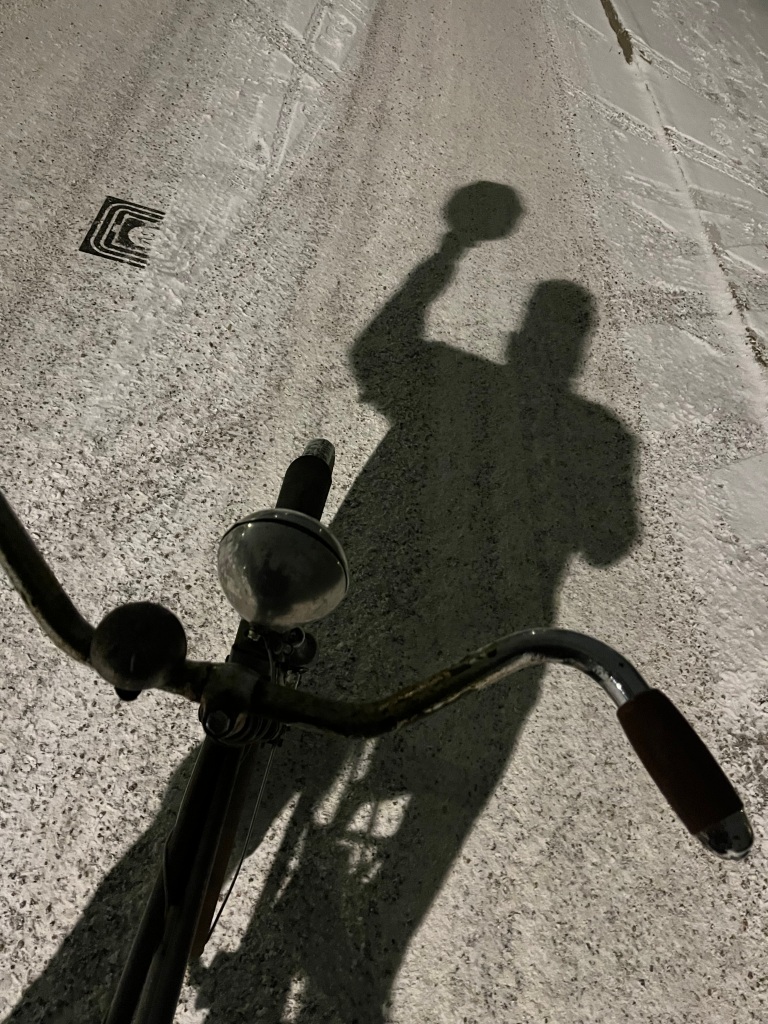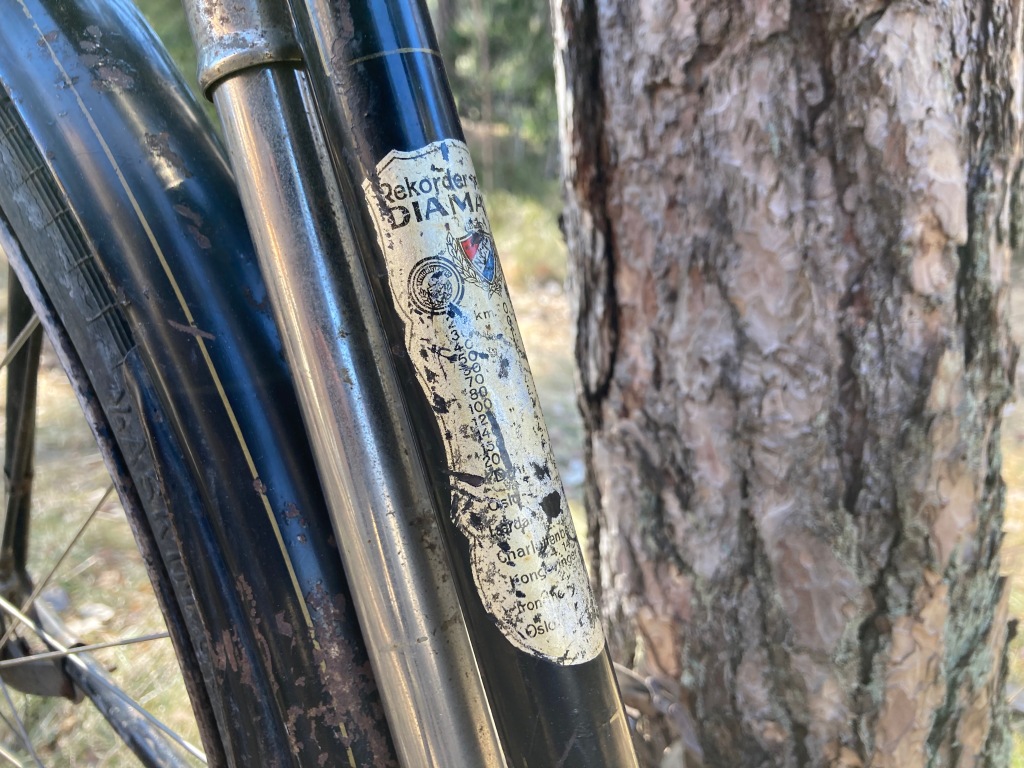Earlier this year I once again joined the Midnite Bicycle League challenge created by Urban Adventure League. I really like those kind of events that Shawn starts, they are plenty of fun and you as a rider do not have to attend any big event for completing the tasks. In fact those challenges feels like they are more interesting and demands more of me as a rider in a way, because you have to plan and figure out the route for your ride an consider a way to complete the different sub-challenges that are included.
Among the challenges we usually are given have some ground rules. For example you have to ride in total of at least 3 rides (or more) and every ride should be at least 5 kilometers long (or longer). Then we have the extra sub-challenges where we have to take a photo of a street sign with a fun name and so on. All depending what type of challenge you attend.
First of January this year the Midnite Bicycle League challenge 2023 started. This is the challenge I really like, not only because it is fun to ride my old bicycles here and there trying to do all sub-challenges, trying to complete as many as possible. It is also because it is a ride in the night, in the winter, in the snow. Living in northern Europe, the night riding part is not a problem. The snow might be a bit tricky, but that is a part of the fun.
My first ride was on 4th of January.
The weather was perhaps not the best for a bicycle ride. There were a blizzard with about 10 centimeters of newly fallen snow on the ground and the snow kept on falling with no intentions of stopping. I took my trusty old rusty Rex for a ride, following the narrow tire tracks made by cars in the snow.
It was a nice ride, even with the strong head wind all snow everywhere. The ride went smoothly for the most part, but on my way back I made an rather silly decision to take a shortcut via a walkway that had not been plowed for a while. As I was enjoying the pristine snow and the lovely night, my front wheel suddenly slipped on an hidden ice-patch underneath all the snow. My bicycle went hard to the left and I went hard to the right. There I was sitting all covered in snow on the ground at the side of the walkway looking at the bicycle, laying in a pile of snow on the other side of the walkway. Covered in snow and bruises I went home for a hot cup of tea to heal. Please ride you bicycles safely, ride along prepared bicycle lanes and use good clothing when riding bicycles in the snow.
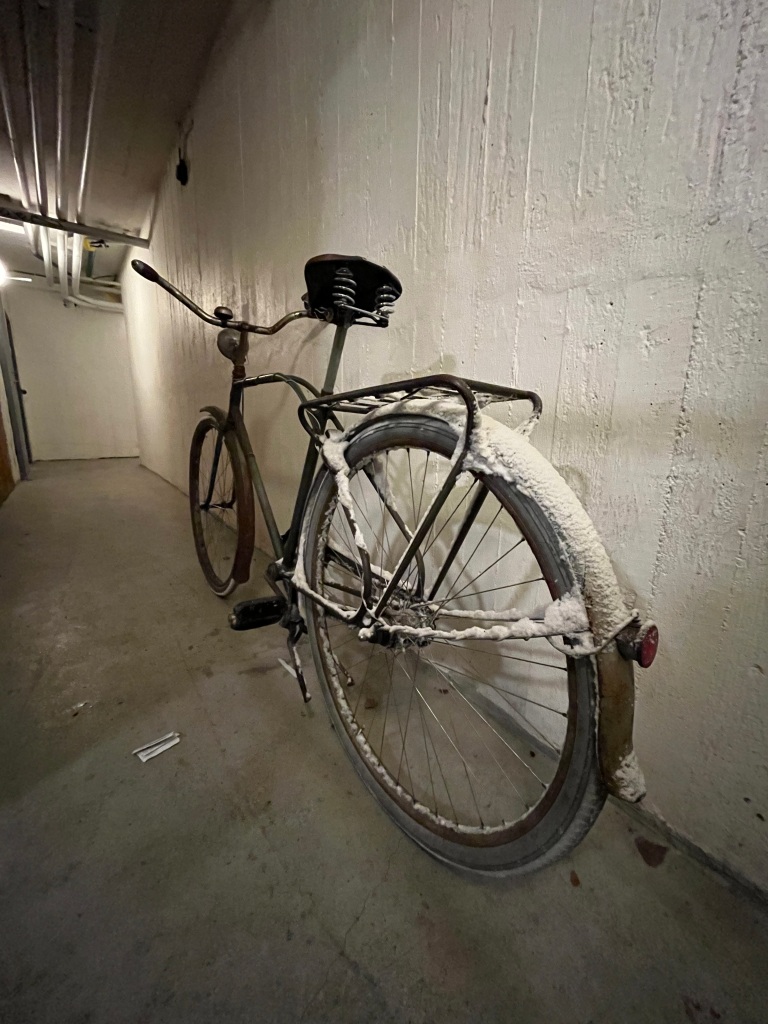
The second ride on 13th of January.
This time I brought along an old analogue camera for the ride. That was one of the sub-challenges this time. Sadly instead of snow, it rained. Since it was quite a while since I was out and about in the middle of the night with an analogue camera, I had forgotten about having to mount the camera on an tripod, adjust all settings according to the light conditions, compose the photo and adjust the focal length. All of the details that makes all the fun with analogue photo, in the summer. Not quite as fun while standing in pouring sub-cooled rain without any light at all to see all the settings on the camera. But I managed to take one or two photos during the ride in the end.
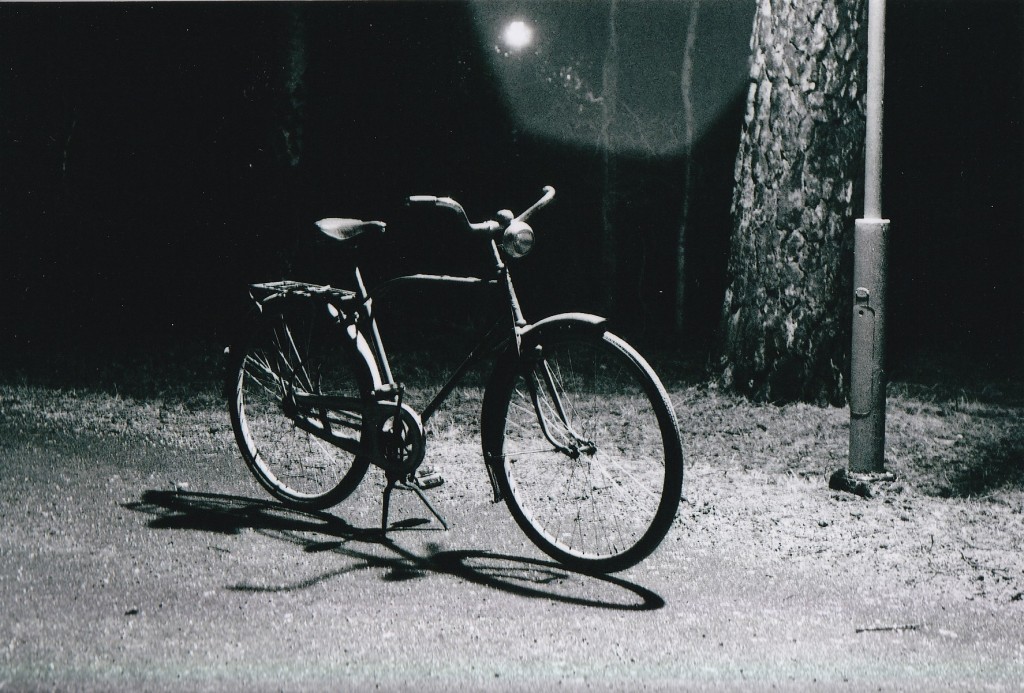
Then we have the third ride on 18th of January.
One of the many sub-challenges of the #midnitebicycleleague2023 beside taking analog photos was to ride a tree speed bicycle. For this ride I dusted off and made sure that the Husqvarna from 1939 was working like a charm. It was really great to ride the old three speed bicycle again, the smooth shifting of gears and the peaceful ticking from the Sturmey Archer 3-speed hub.
As usual I took a ride to Skogskyrkogården (forest cemetery) wanting to get away from the busy streets for a calm and peaceful ride in a slow tempo. But I had not expected it to be so dark, there is usually streets lights on the cemetery. By some strange reason they were turned off this day, luckily I had a working dynamo on my bicycle that was providing power to the head light that gave me some guidance in the dark.
Shame that the vintage ASEA dynamo was rather un-oiled and screamed like something out of a horror movie from 1950’s. Time to make a mental note, refurbishing the dynamo is needed.
The ride went well, I had a cup of tea and a sandwich along the way. Since there were frames left in the analogue camera after my second ride, I took some photos. But as last time, they turned out way to dark. I can not blame anything else than a bad photographer.
But that is the charm with taking a photo and having to wait 2 weeks for the developed prints only to realize that you made errors when taking the photos.
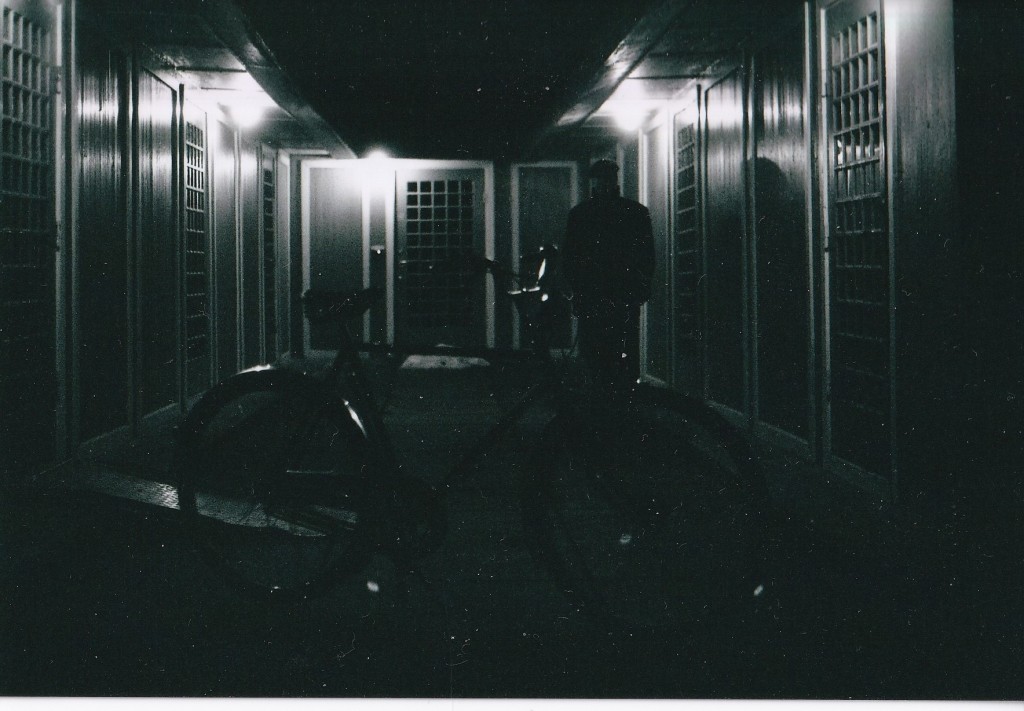
Lastly the fourth and final ride was made on 1st of February.
This time I decided it have a relaxing and fun ride. Simply riding and visiting different restaurants located in my area. I found two new restaurants that I never had visited earlier. It was a nice to ride around and simply head in to a restaurant for a small beer and some snacks, having a rest inside a cosy restaurant for a while. Then heading out again in the snow towards the next place to visit by riding all kinds of different routes.
The weather was nice, during the rides it had been all kinds of weather, snowing, raining, really cold and thaw weather. But on this ride the weather was a normal winters day with about -4 degrees, packed snow on the streets and no ice-patches. No need for two crashes during the same challenge.
A funny thing happed at one of the restaurants. Suddenly I was approached by a man that asked me if I was involved in tweed events. Is it Scheebremse – he asked me? It turned out that he had been an participant at one tweed events that I organized be before the pandemic. Fancy that, I was a celebrity.
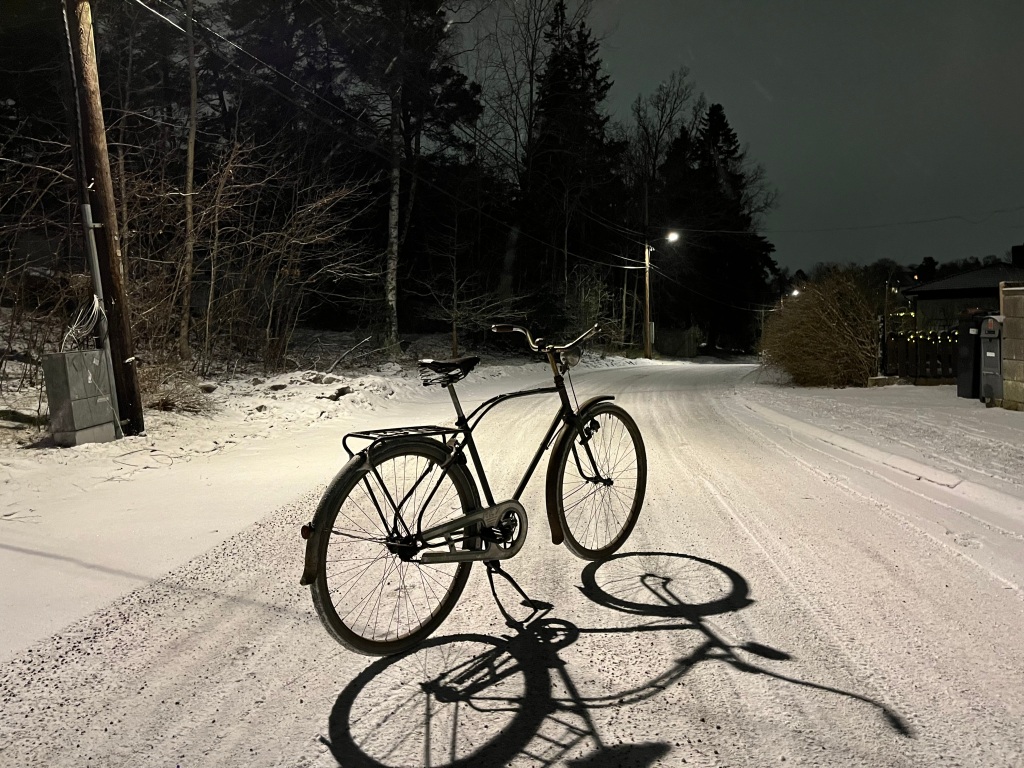
After completing all the rides needed, after receiving all the photos I sat down and wrote my journal on a old typewriter since my handwriting is impossible to read. Also it is fun to write an official journal on a type writer. Later that week I posted the journal over to Urban Adventures League HQ for approval.
That is one more advantage with al those challenges, there is no possible way to rush things. The rides take their time, writing and posting as well. It is a stark contrast from the digital everyday life we are living in today. I really enjoy the slowness. After all, why rush on an vintage bicycle? We should enjoy the journey more, have a look around when going from place to place, even during the vinter.
Until next time, ride safely and happy tweed.
